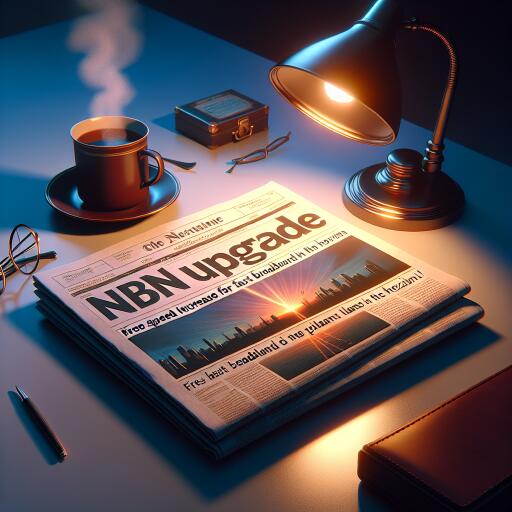MIL-Evening Report: NBN Upgrade Unveiled: How Free Speed Boosts Could Revolutionize Australian Broadband
In a move poised to alter the digital landscape for countless Australians, the National Broadband Network (NBN) is proposing an upgrade that promises to supercharge internet speeds for its users without hiking up the prices for retailers. This initiative could see download velocities soar to quintuple their current speeds for the network’s premiere home services.
The leap in broadband speed is designed to keep pace with the surging demand for higher internet speeds, fueled by the ever-growing number of connected devices in Australian households. With an average of 22 devices per household today, and projections suggesting a jump to 33 by 2026, coupled with a household data consumption that has doubled over the past five years to an average of 443 gigabytes monthly, the need for enhanced broadband capabilities has never been clearer.
Driving this data surge are not only conventional uses such as streaming and online gaming, with single game updates occasionally exceeding 30 gigabytes, but also the advent of high-resolution 4K video streaming and emerging technologies like virtual and augmented reality. As these technologies become increasingly integrated into everyday life and entertainment, the demand for faster broadband to support them is undeniably on the rise.
According to the NBN, this speed upgrade could be rolled out sometime between later this year and early next year. Achieving this would involve amplifying the NBN’s overall capacity, which would then facilitate these enhanced speeds to consumers. This upgrade could herald a new era of internet usage, offering speeds that were once thought of as the domain of the distant future, now potentially at the fingertips of the average user.
However, this announcement comes on the heels of the Australian Competition and Consumer Commission (ACCC)’s approval of significant annual price rises for broadband services, a move that received mixed reactions from broadband retailers. While large operators like Telstra and Optus have shown support for the NBN’s plans, smaller providers express concerns over the potential increase in operational costs, particularly in relation to ‘backhaul’ charges – the intermediate connections between service providers and the NBN network itself. The dilemma for smaller providers rests on whether these extra costs should be passed onto consumers, which could hinder the affordability of the improved service.
In response to the proposed changes, Aussie Broadband’s managing director shared optimism about the potential benefits for Australian homes and businesses, indicating a general industry excitement about the step-up in technology despite underlying apprehensions about the details of the proposal.
For the NBN, enticing users to migrate from the basic 50 Mbps plans to the more advanced Home Fast plan, which boasts download speeds of 500 Mbps, marks a significant objective. Moreover, the network hopes this boost will stimulate users with the older copper ‘fibre to the node’ connections to consider moving to ‘fibre to the premises’ connections through the enticing offers available through retailers. With the consultation paper issued to retailers, seeking their feedback on the changes by April 19, 2024, the NBN’s vision for a faster, more robust broadband network could soon become a reality for millions of Australians.
As the consultation process unfolds, it will be fascinating to observe how the collaboration between the NBN and retailers evolves, potentially setting the stage for a transformative shift in Australia’s digital infrastructure and how we engage with the internet in our daily lives.










